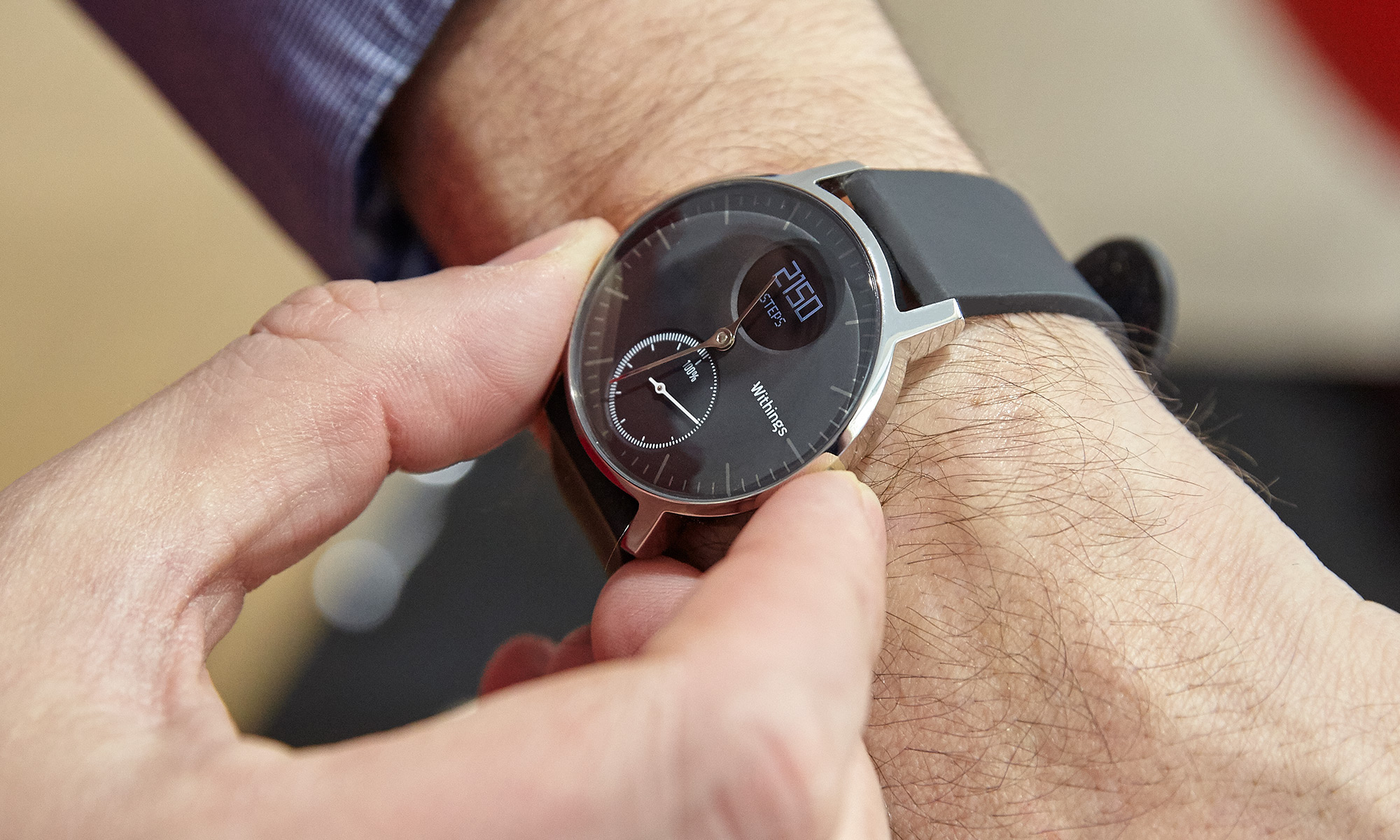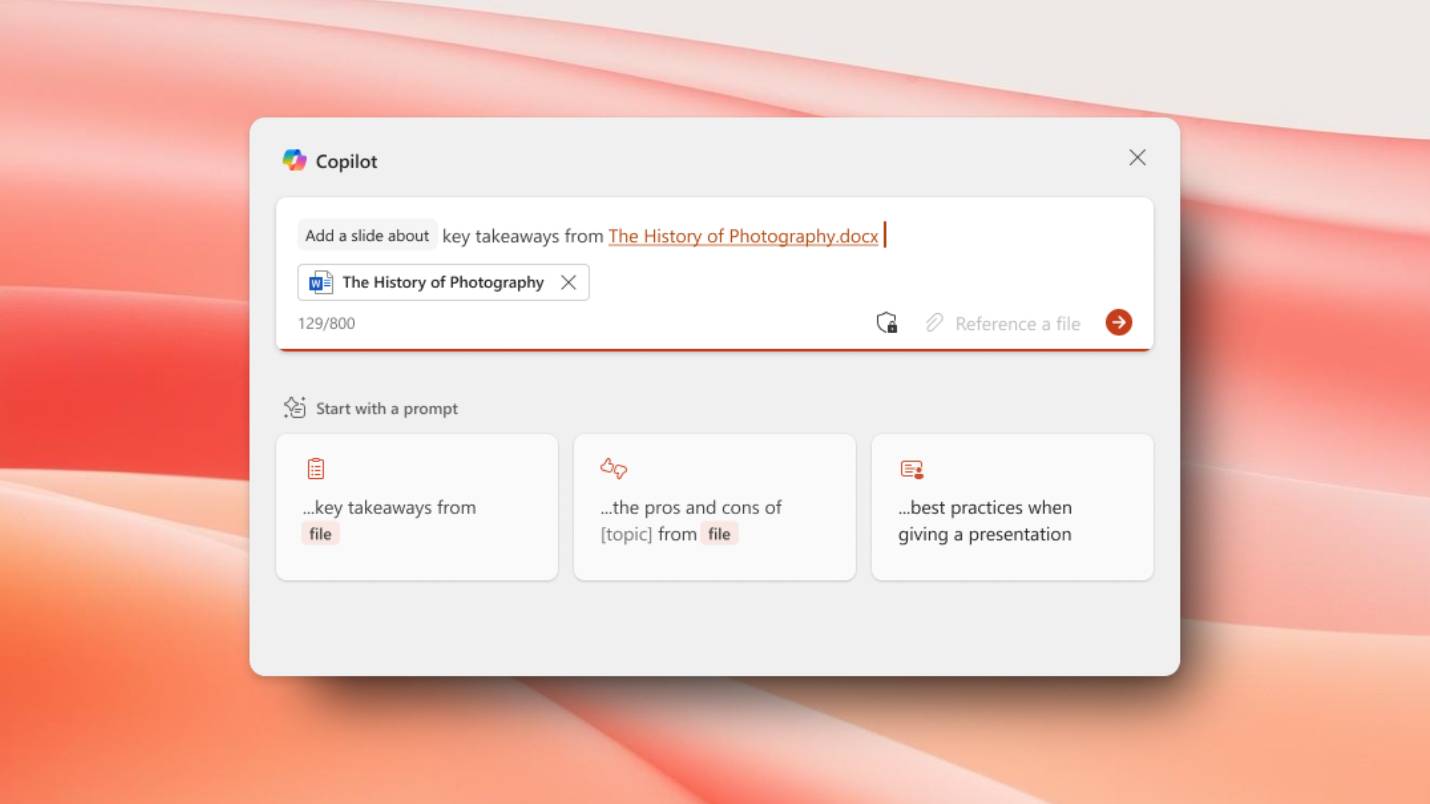Tom's Guide Verdict
The elegant Withings Steel HR is an analog watch hiding a great fitness tracker.
Pros
- +
Long battery life
- +
Elegant design
- +
Water-resistant
- +
Accurate heart-rate monitor
Cons
- -
Hard to read the display while running
Why you can trust Tom's Guide
Admit it: You stopped wearing that fitness tracker you got for Christmas sometime in mid-January, right? Yeah, you wanted to get in shape, but maybe you didn’t want to keep strapping on a single-purpose device.
The Withings Steel HR could be the fitness tracker you actually wear for good. That’s because it’s a small, sleek watch that just happens to track your steps, sleep and heart rate, while also letting you know when someone calls or texts you. And, unlike many other watch-style fitness trackers, the Steel HR has a great app, too.
Design: Svelte
Compared with the chunky smartwatches and GPS watches I’ve tested, such as the Samsung Gear S3 and the Garmin fenix 3, the Steel HR looked and felt positively dainty on my wrist. Like Withings’ own Activite Steel, the HR version has a polished stainless-steel case, a black watch face and a black silicone band. Overall, it’s very elegant, even more so than the Fitbit Charge 2, and it would look great on anyone’s wrist.
The Steel HR comes in two versions: a smaller, 36-millimeter (1.4 inches) size ($179), which is available with a white or black face; and a larger, 40-mm (1.6 inches) version ($199), which has a slightly thicker bezel with engraved numbers around the edge.
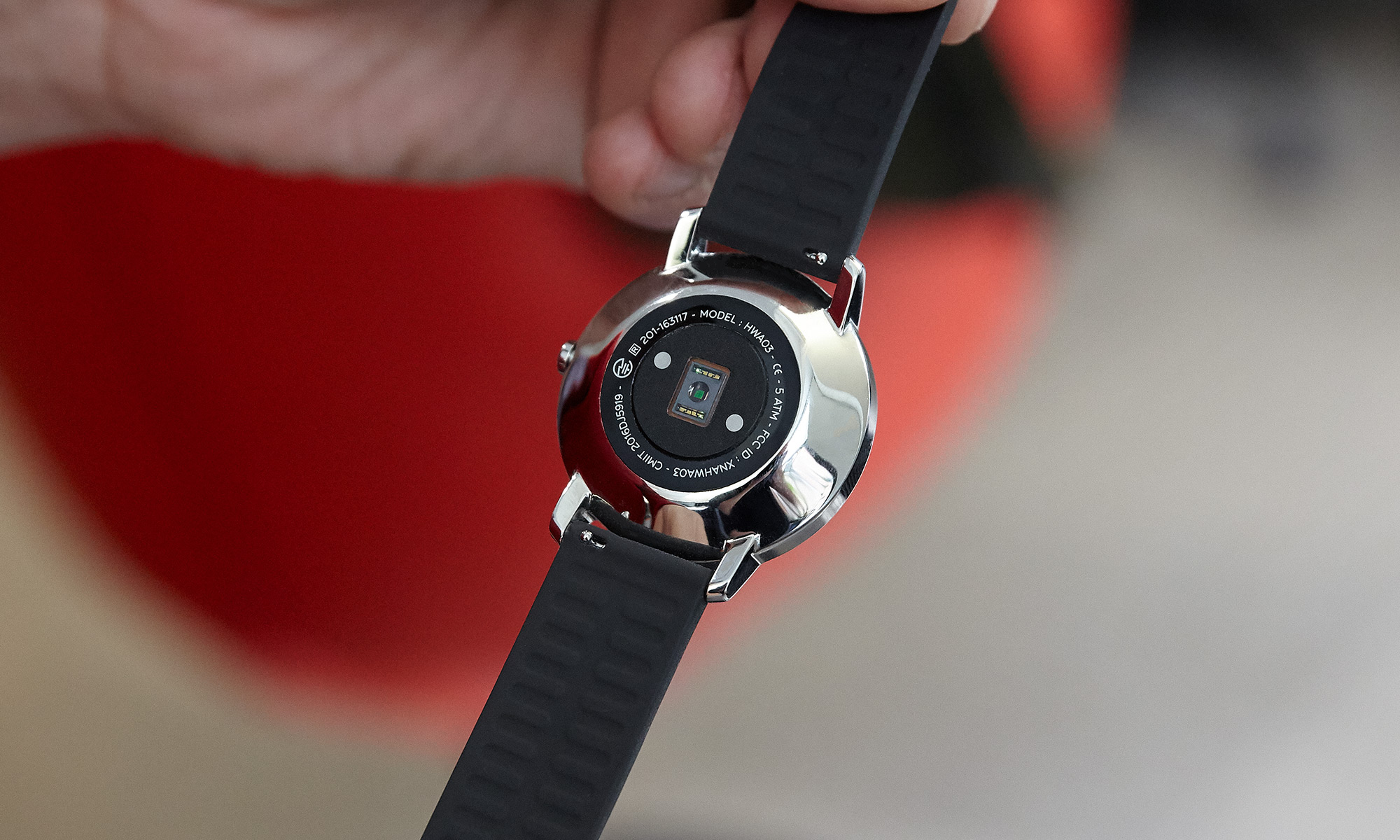
The underside of the Steel HR has an optical heart-rate sensor and two metal contacts for the wireless charger. Unlike the Charge 2, which can’t be submerged, the Steel HR is water-resistant to 50 meters (164 feet), which is good, considering the watch can track your swimming.
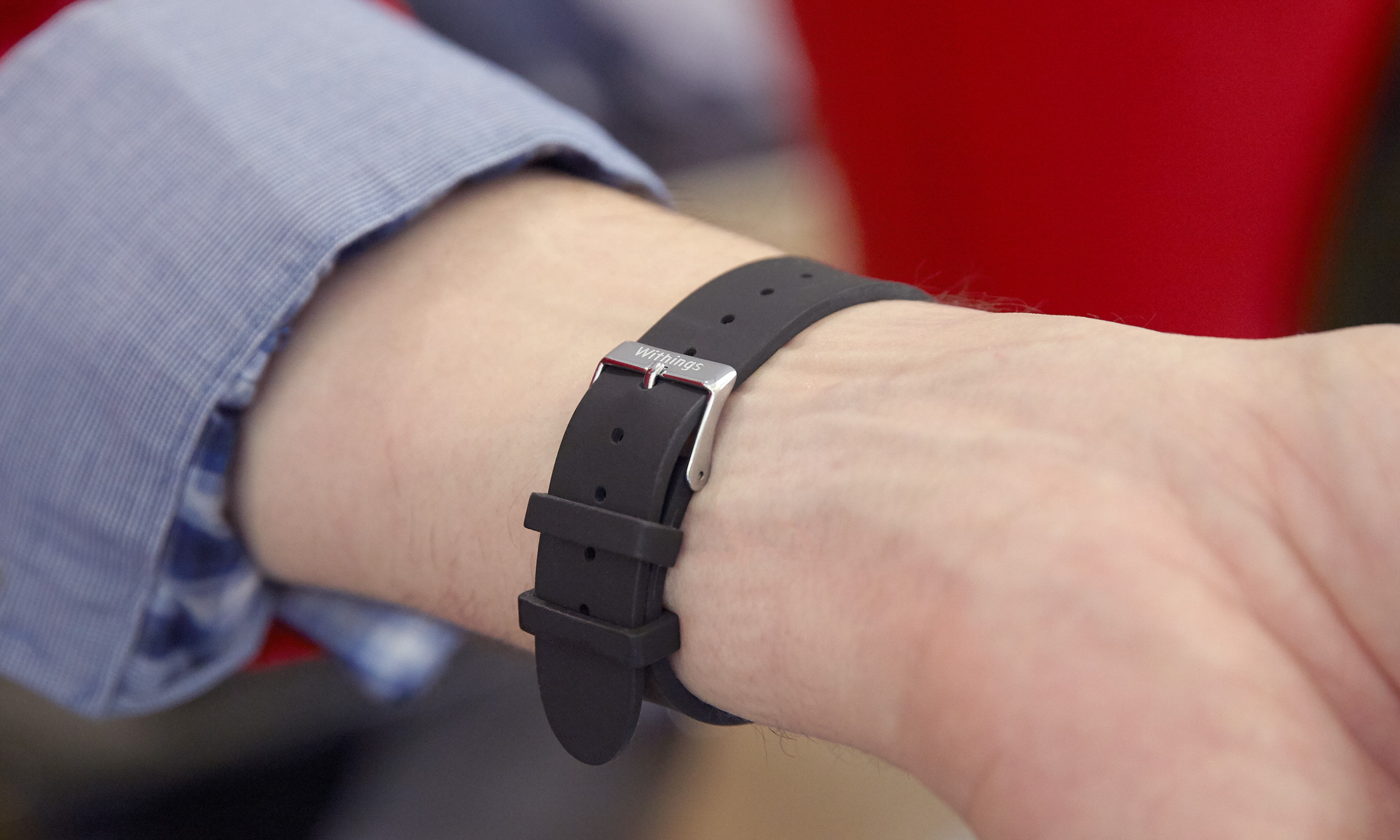
Although it’s made of silicone (so it’s fine for it to get wet), the Steel HR’s band is indistinguishable from a leather band, which makes it all the more easier for it to blend in with whatever you’re wearing.
Display: Tiny, But Functional
On the top half of the watch face is a small, circular LED display that shows the date, your heart rate, step count, distance and alarms you may have set. Pressing the button on the side of the watch lets you switch among these screens. The LED display also lights up (and the watch vibrates) when you get a call, text or calendar event.
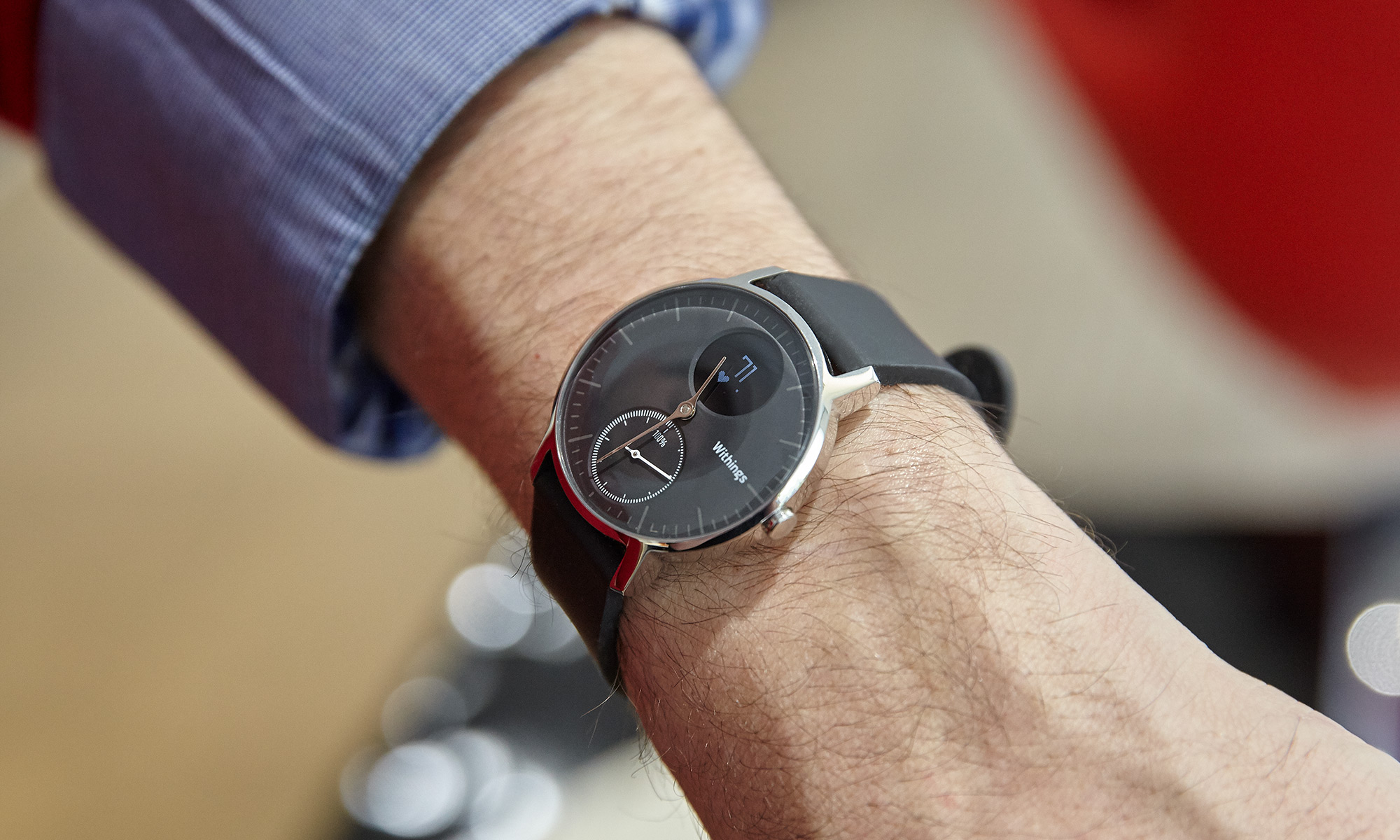
A subdial at the bottom of the analog watch face shows you, percentage-wise, how far you are toward reaching your daily step goal.
Owing to the size of the watch itself, the Steel HR has a tiny screen (about a quarter of an inch in diameter), which is much smaller than the one on the Fitbit Charge 2. Although I found it was bright enough to see outdoors while I was walking around, it was very hard to read it while I was running. All that extra movement made it hard for me to focus on the screen.
Fitness Tracking
The Steel HR can automatically detect and track up to 10 activities (including swimming, running, biking and walking), and will let you manually log more than 30 other activities. However, the Steel HR won’t track your heart rate during those activities unless you press and hold the crown. That’s a minor inconvenience.
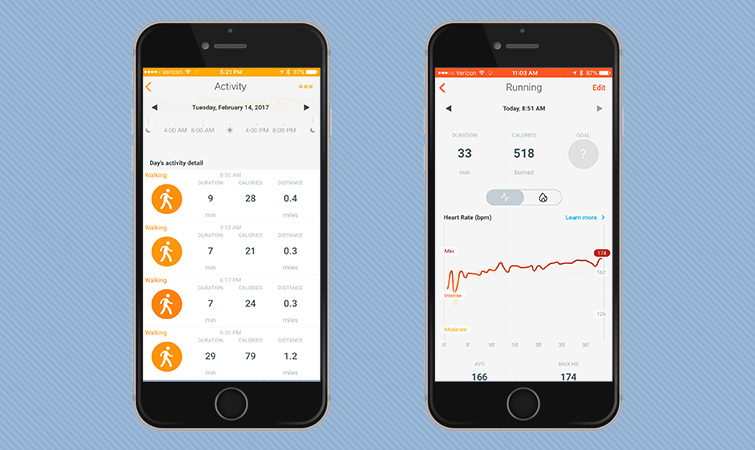
The Steel HR’s step counter proved very accurate; it recorded a 1,000-step walk as 963 steps. An accelerometer will never be as precise as a GPS device, but that’s pretty darn close.
I was similarly impressed with the Steel HR’s heart-rate monitor. Over the course of a 3.75-mile run, it measured my average heart rate as 166 beats per minute, and my max at 174 bpm. That’s pretty close to the numbers from the Garmin Forerunner 235 (165 bpm and 177 bpm), whose optical heart-rate monitor I’ve found to be very accurate.
The Steel HR’s step counter proved very accurate; it recorded a 1,000-step walk as 963 steps.
Although the Steel HR was smart enough to know that I had gone on a run, the app’s display didn’t show how far I’d gone. It’s a pretty strange omission, considering the summary of a walking activity recorded my distance. I was finally able to see the distance by pressing the Edit button at the top of the screen. This was handy, because the Steel HR overestimated my 3.75-mile run by nearly half a mile. I also found it odd that the app didn’t show other running metrics, such as average pace.
I wish the Steel HR had a move reminder (like that on the Fitbit Charge 2), which would cause the watch to vibrate if it detected that you were sitting for too long.
Intuitive App
Withings’ app is organized in an easy-to-decipher timeline view of your day’s activities, starting with your step count at the top. Below are cards showing a summary of your sleep, as well as any other activities you may have completed. Selecting any one of these cards offers a more detailed view of that activity, in bold colors and intuitive graphics.
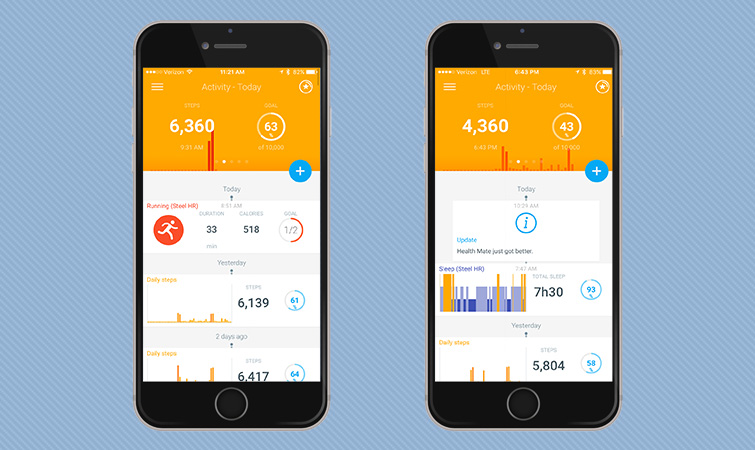
I also liked that the app synced quickly with the Steel HR; the new data would show up in less than a minute.
Through Withings’ app, you can also sync your activity with Apple Health, Runkeeper and Nike+. The app also pairs with MyFitnessPal, so you can add diet-tracking data into the mix. The Withings app is not as seamless as Fitbit’s app, which has diet tracking built in, but at least it’s there.
As with Fitbit’s app, you can earn virtual rewards, called Badges, the more you exercise. For instance, if you run the equivalent of 42 kilometers, you get the Marathon badge. There are also badges for steps and elevation.
The app also pairs with other Withings devices, such as its smart scale, so you can import other fitness and health data more easily.
Battery Life
Editor's Note: This section was updated to reflect the fact that you can view the Steel HR's battery life on the watch itself.
Withings claims that the Steel HR has a 25-day battery life with normal use, which would be exceptional for fitness trackers. (The watch will last about four days with continuous heart-rate tracking enabled.) Most other fitness trackers, including the Fitbit Charge 2, will last no more than a week before needing a recharge.
After a week, the Steel HR’s battery life had dropped from 100 percent to 62 percent. That equates to about 20 days of battery life, which, while not as long as Withings’ estimate, is about four times that of most other trackers in this price range. That’s really impressive. You can also view the battery level on the watch's display, though you have to enable that screen in the Withings app.
The little wireless-charging pad that comes with the Steel HR has some pretty weak magnets to hold the watch in place, so be careful where you leave it on your nightstand.
Bottom Line
The Withings Steel HR does many of the same things as the Fitbit Charge 2: It monitors your heart rate throughout the day and night, can track individual activities automatically, and measures your steps, calories, distance traveled and sleep. It will also alert you when someone calls or texts, and will let you set silent alarms.
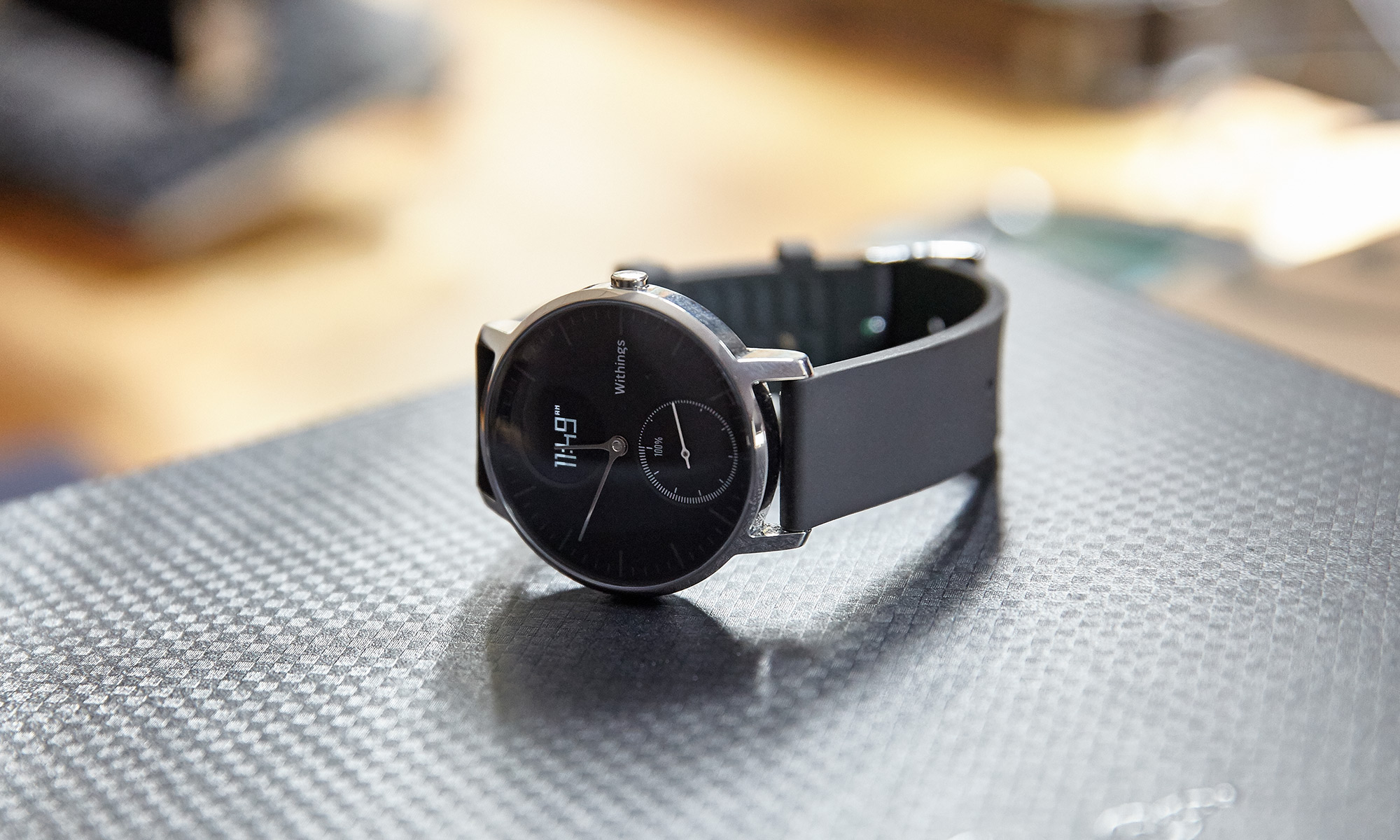
You don’t get a VO2 max score as you do with the Charge 2, nor do you get the guided breathing exercises. However, the Steel HR is a fitness tracker that shows the time continuously, and it’s much more attractive, and lasts much longer than, the Fitbit Charge 2. The Steel HR is also $30 more expensive, but it’s a fitness tracker I would wear more often.
Photo credit: Jeremy Lips/Tom's Guide

Michael A. Prospero is the U.S. Editor-in-Chief for Tom’s Guide. He oversees all evergreen content and oversees the Homes, Smart Home, and Fitness/Wearables categories for the site. In his spare time, he also tests out the latest drones, electric scooters, and smart home gadgets, such as video doorbells. Before his tenure at Tom's Guide, he was the Reviews Editor for Laptop Magazine, a reporter at Fast Company, the Times of Trenton, and, many eons back, an intern at George magazine. He received his undergraduate degree from Boston College, where he worked on the campus newspaper The Heights, and then attended the Columbia University school of Journalism. When he’s not testing out the latest running watch, electric scooter, or skiing or training for a marathon, he’s probably using the latest sous vide machine, smoker, or pizza oven, to the delight — or chagrin — of his family.
